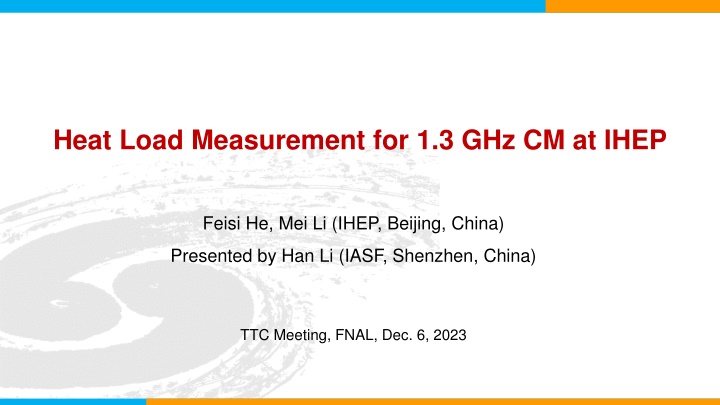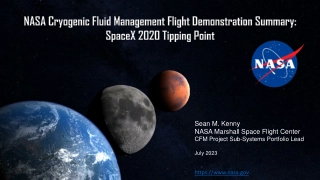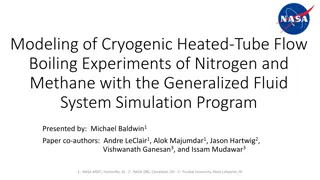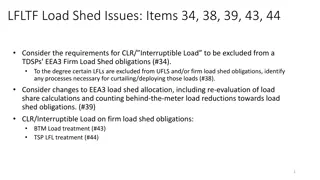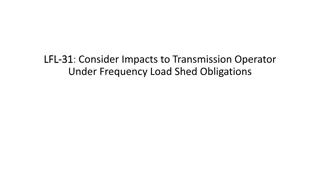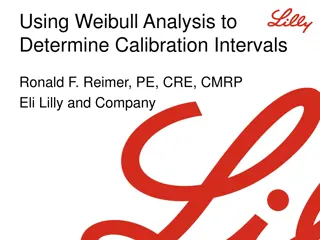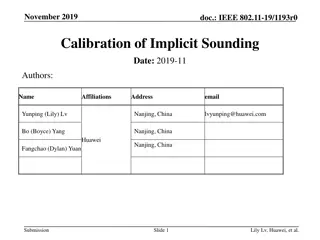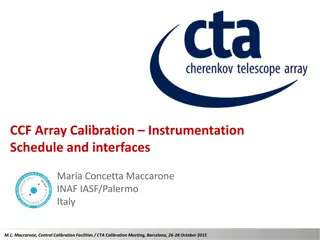Cryogenic Heat Load Measurement and Calibration at IHEP
Researchers at IHEP in Beijing, China, conducted heat load measurements for a 1.3 GHz Cryomodule, analyzing uncertainties in flow rate readings and calibrating mass flow rates. The study involved static and dynamic heat load measurements, utilizing various control interfaces and valves. Calibrations were done using heater immersion in helium liquid tank and analyzing data variations over time to estimate uncertainties. The research aims to improve accuracy in cryogenic heat load measurements for advanced light source applications.
Download Presentation

Please find below an Image/Link to download the presentation.
The content on the website is provided AS IS for your information and personal use only. It may not be sold, licensed, or shared on other websites without obtaining consent from the author.If you encounter any issues during the download, it is possible that the publisher has removed the file from their server.
You are allowed to download the files provided on this website for personal or commercial use, subject to the condition that they are used lawfully. All files are the property of their respective owners.
The content on the website is provided AS IS for your information and personal use only. It may not be sold, licensed, or shared on other websites without obtaining consent from the author.
E N D
Presentation Transcript
Heat Load Measurement for 1.3 GHz CM at IHEP Feisi He, Mei Li (IHEP, Beijing, China) Presented by Han Li (IASF, Shenzhen, China) TTC Meeting, FNAL, Dec. 6, 2023
Worlds First Mid-T 1.3 GHz Cryomodule by IHEP For Dalian Advanced Light Source (DALS) R&D. Refer to Jiyuan Zhai s talk on Tuesday WG1: Performance of First Mid-T 1.3 GHz Module 2
Module Cryogenic Control Interface Mass flow meter Endcap pre-cooling valve J-T valve Cooldown valve Heater in liquid level tank Heater in liquid level tank 3
Heat Load Measurement: Uncertainty of Flow Rate The flow rate reading from mass flow meter at room temperature have an uncertainty of 1.96 ??_????= 0.5 % ????? ???? ?? ??????? <????? 2 The flow rate data is obtained during a period of time. The standard deviation of the data is the random error ??_?(typically ??_?~0.001 g/s with > 600 data in 5 mins) The flow rate at static state may vary after several hours, which introduce a systematic error, and the uncertainty ??_?~0.05 g/s can be estimated by standard deviation of measured values. By measuring the flow rate at known heater power before and after Q-measurement, the ??_?could be calibrated. + 0.5 % ???????, typically ??_????~ 0.01 0.015 g/s. Total uncertainty of flow rate is ?? = ??_????2+ ??_?2+ ??_?2 Date of measurement Static flow rate [g/s] 2023.6.26 10:19 1.211 2023.6.29 6:45 1.119 2023.7.3 1:44 1.093 2023.7.7 1:06 1.100 2023.7.7 8:16 1.070 Standard deviation 0.055
2 K Static Heat Load Measurement (Mass Flow Method) Close bottom cooldown valve (CV6218), endcap pre-cooling valve (CV6215) and J-T valve (CV6214). Calibration of mass flow rate is done with a heater immersed in the helium liquid level tank. In most cases, flow rate is measured from liquid level 80 % to 75 %. *Note: standard deviation is used in this table Using latent heat By calibration (2023.6.7-12) By calibration (2023.6.26-29) Module (23.04 J/g) * flow [g/s] (24.0 0.2 J/g) * flow [g/s] (23.8 0.4J/g) * flow [g/s] 2 K static heat load [W] 25.8 1.3 28.6 0.4 27.5 0.8 ????= ???? ????????+ ???? when dynamic heat load is 0, then ???????= ???? ??????? 0 = ????= ???? ???????+ ???? ???????= ???? 2 1 ? ???????? ?? ??? Better fitting accuracy (important during single-cavity Q measurement) if closer to averaged flow rate ??during calibration. ??_???= ??_? 1 + 2 2 ? ?=1 ?? ???? ??+???? ? 2 where ??_?= , Better fitting accuracy with more data (n). ? ? ??=1 2=1 (?? ??)2 ??,??? ? ? ?=1 ?=1
Dynamic Heat Load of 8 Cavities at 16 MV/m and 21 MV/m Close bottom cooldown valve (CV6218), endcap pre-cooling valve (CV6215) and J-T valve (CV6214). Total uncertainty of dynamic heat load is ?????= ??_???2+ (???? ??)2 *Note: standard deviation is used in this table Measurement Date 2023.6.2 Mass flow [g/s] 3.75 0.05 Qdyn[W] (Cal. 6.7-12) 61.3 1.3 63.0 1.3 57.7 1.2 58.7 1.2 106.2 1.4 Qdyn[W] (Cal. 6.26-29) 61.6 1.4 63.2 1.4 58.0 1.4 59.0 1.4 106.0 1.9 Qdyn[W] RF Voltage, cool down (date, rate) (use latent heat) 60.5 1.9 62.3 1.9 57.2 1.9 58.4 1.9 103.8 1.9 133 MV, fast cool down (6.1, > 40 g/s) 133 MV, fast cool down (6.1, > 40 g/s) 2023.6.2 3.82 0.05 133 MV, slow cool down (6.19, ~ 7 g/s) 2023.7.3 3.60 0.05 133 MV, slow cool down (6.19, ~ 7 g/s) 2023.7.4 3.64 0.05 174 MV, fast cool down (6.1, > 40 g/s) 2023.6.2 5.62 0.05
Dynamic Heat Load of Single Cavity at 16 MV/m The J-T valve CV6214 is fixed at 20 %. Heater power 6-7 W keeps the liquid level constant at ~ 90 %. The dynamic heat load is calibrated with a heater immersed in the liquid level tank; heater power 0-15 W is adopted to get best fitting accuracy around 7-8 W. *Note: standard deviation is used in this table Cav1 Cav2 Cav3 Cav4 Cav5 Cav6 Cav7 Cav8 Dynamic heat load at 16 MV/m [W] 7.4 0.3 10.0 0.3 8.0 0.3 6.8 0.3 6.8 0.3 7.1 0.3 10.5 0.3 6.2 0.3
Back up 8
